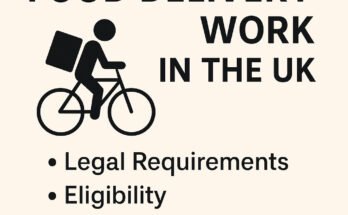Planning for retirement is one of the most important financial decisions you’ll make in your life. In the UK, the pension system provides multiple layers of retirement income support, yet many people remain unaware of how it works. This comprehensive guide to the UK pension system will walk you through the types of pensions available, how they work, eligibility criteria, contributions, tax implications, and how to make the most of your pension savings.
Understanding the UK pension system can empower you to make informed decisions for a comfortable and financially secure retirement. Whether you’re just entering the workforce, self-employed, or approaching retirement, this guide will help you navigate the complex pension landscape.
What is the UK Pension System?
The UK pension system is a combination of state and private retirement income schemes designed to ensure individuals receive income once they stop working. It consists of three primary pillars:
- State Pension
- Workplace Pension
- Personal Pension
Each of these components plays a unique role in ensuring financial security in retirement. Together, they form the foundation of the UK pension system.
State Pension
What is the State Pension?
The State Pension is a regular payment from the government based on your National Insurance (NI) contributions. It provides a basic income for individuals who reach the State Pension age.
Eligibility
To be eligible for the State Pension, you must have at least 10 qualifying years on your National Insurance record. To receive the full amount, you typically need 35 qualifying years.
Current Rates (2025)
As of April 2025, the full new State Pension is £221.20 per week. Check updated rates
When Can You Claim?
The State Pension age is currently 66 and will gradually rise to 67 by 2028. Check your State Pension age
How to Claim
You can claim your State Pension online or through a paper form. Apply here
Workplace Pensions
What is a Workplace Pension?
A workplace pension is a scheme arranged by your employer. A portion of your salary is automatically contributed to your pension fund, and your employer adds their own contributions.
Auto-Enrolment
Under auto-enrolment, all eligible workers are automatically enrolled into a pension scheme. This has significantly increased participation rates in the UK pension system.
Eligibility
- Aged between 22 and State Pension age
- Earning at least £10,000 annually
- Working in the UK
Minimum Contributions
As of 2025:
- Employee: 5%
- Employer: 3%
- Total: 8% of qualifying earnings
Types of Workplace Pensions
- Defined Contribution (DC)
- Defined Benefit (DB)
DC schemes depend on contributions and investment performance. DB schemes provide a guaranteed income based on your salary and years of service.
Personal Pensions
What is a Personal Pension?
Personal pensions are private pension schemes that you arrange yourself. They are particularly useful for self-employed individuals or those wanting to supplement other retirement income sources.
Types of Personal Pensions
- Stakeholder Pensions: Low fees and flexible contributions.
- SIPP (Self-Invested Personal Pension): Greater control over investments.
Tax Benefits
You receive tax relief on your contributions. For basic-rate taxpayers, a £80 contribution is topped up to £100.
Contributions and Tax Relief
Annual Allowance
You can contribute up to £60,000 per year and still receive tax relief (as of 2025). Check current limits
Lifetime Allowance
The Lifetime Allowance was abolished in April 2024, meaning there’s no longer a limit on how much you can build up in your pensions without incurring extra tax.
Carry Forward Rule
You can use unused allowances from the previous three years to increase your current year’s contribution limit.
Pension Freedoms
Since 2015, pension freedoms allow you to access your defined contribution pensions more flexibly:
- Take 25% tax-free
- Flexible withdrawals
- Annuities
- Drawdown
These freedoms make the UK pension system more versatile but also place more responsibility on individuals.
Planning for Retirement
Estimate Your Retirement Needs
- Housing costs
- Healthcare
- Daily living expenses
- Leisure and travel
Use Tools and Calculators
State Pension forecast tool Pension calculator
Diversify Your Pension Portfolio
Relying solely on the State Pension is often not enough. Combining workplace and personal pensions gives you a more robust income stream.
Transferring Pensions
You may choose to consolidate multiple pension pots into one for easier management and potentially better performance. However, be aware of potential fees and loss of benefits.
Self-Employed and Pensions
The self-employed do not benefit from auto-enrolment. Opening a personal pension is crucial.
Considerations for Self-Employed
- Open a SIPP or stakeholder pension
- Make regular contributions
- Review investments annually
Women and Pensions
Women often face pension gaps due to career breaks, part-time work, or caregiving.
How to Improve Pension Outcomes
- Claim NI credits for childcare
- Continue contributions during breaks
- Track pensions regularly
International Workers and Expats
Expats can still contribute to UK pensions in some cases. Check tax treaties and local pension rules.
Common Mistakes to Avoid
- Ignoring pension statements
- Missing employer contributions
- Not updating beneficiaries
- Poor investment choices
Final Thoughts
The UK pension system is multifaceted but manageable with the right knowledge and planning. Taking control of your pension early can lead to a more secure and enjoyable retirement. Be proactive, seek advice when needed, and make the most of what the UK pension system has to offer.




